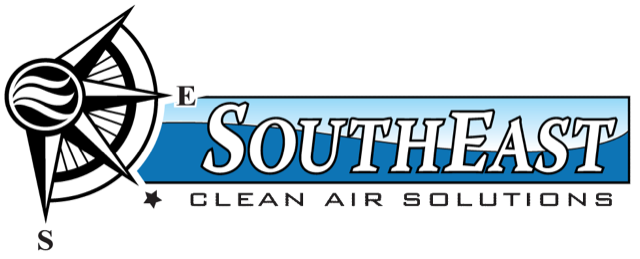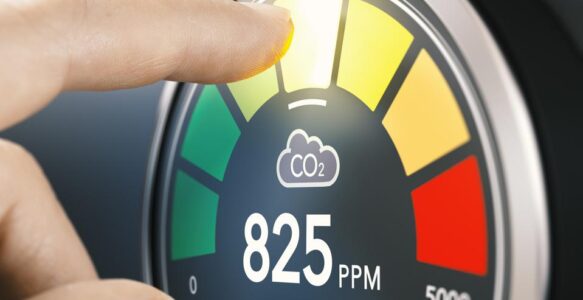While sitting in the patient room and waiting for my Endocrinologist to come discuss my care plan for the management of my Type 1 Diabetes, I noticed myself observing the similarities between the processes used by my doctor’s office mirrors the processes we use in our HVAC inspection and assessment services to produce data-driven targeted service solutions.
However, before I elaborate on these similarities it is important to share some background information about the HVAC industry and how it has ‘traditionally’ gone about making product and service recommendations.
Until very recent advancements in air quality testing and monitoring technologies, the field of Indoor Air Quality, or IAQ, was primarily limited to high dollar scientific research laboratories and universities. Limited access to quality information about the state of the IAQ inside homes and buildings resulted in a mentality in the HVAC industry of “let’s throw some products at it and hope something sticks.”
This approach of ‘blindly’ recommending products and services for IAQ concerns was viewed by most, but not all HVAC companies as sales opportunities to rake in more money. Occasionally these ‘blind recommendations’ would have some value in limited scenarios where the product recommendation aligned with the actual contaminant inside the home or building. Even a broken watch tells the time correctly twice per day!
Thank goodness, with the exception of COVID-19, the medical industry generally relies on data driven targeted solutions to address the underlying medical condition(s) or symptom(s) experienced by their patients. Could you imagine if a doctor just prescribed ‘Tylenol’ as a blind recommendation for every patient they had? Relying on that ‘blind recommendation’ of Tylenol would KILL ME as a Type 1 Diabetic if I was truly in need of Insulin!
Just as Tylenol is helpful for relieving pain symptoms, it provides no relief for A.D.H.D., Type 1 Diabetes, Anxiety, and a host of other health conditions that people may or may not have.
The same holds true for IAQ improvement products – a UVC light will do NEXT TO NOTHING to remove elevated airborne particle concentrations from the airstream… this requires a pleated media filter for larger particles, or a hybrid ionized filter for smaller particles!
This is why TARGETED product and service recommendations for air purification is so essential!
Circling back to my visit to the Endocrinologist office, I noticed a few processes that align closely with the way we conduct our inspections and assessments of HVAC systems.
The first thing I noticed was that every time I visit the doctors office, they begin by gathering some basic information about me… I step on a scale so they have my weight, I stand under the sliding wall ruler so they have my height, I have my blood pressure and heart rate measured with the arm cuff and ball inflator device, and I review all of my current medications with the patient nurse before I see the doctor.
In the HVAC hygiene and IAQ world, this is the equivalent of collecting HVAC equipment manufacturer information from labels on the outdoor condenser unit and indoor air-handling unit to determine the tonnage [size] of the system, comparing the sizing of the duct system [vascular] with the size of the HVAC system [cardio/heart], measuring the total static pressure of the HVAC unit to ensure its within design specifications, and reviewing any current maintenance plans that are in place with your HVAC service provider.
Additionally, observations are made by the nursing and medical staff about any physical symptoms I may have displayed. If I am walking with a limp, they are going to ask me about my injury and communicate that to the doctor. In the same way, if we notice your HVAC system is not operating correctly and something is out of whack – we communicate the issue with you to discuss with your HVAC service provider. We look at HVAC systems almost everyday, and we understand how they’re supposed to function, and when there’s an issue with the operation of the unit.
The next thing that happens during my doctors visits is my Endocrinologist typically wants additional data to better understand if my Type 1 Diabetes has been well-managed since our last appointment. This often includes a blood sample, A1C test, and urine analysis to ensure that my ‘levels’ are where they should be to prevent adverse health effects.
As my doctor and I review the results, this is exactly like the ‘assessment’ portion of our HVAC inspection and assessment service. My doctors don’t ‘guess’ what my blood sugar levels are, what my A1C reading is, or what my cholesterol and protein levels are. They MEASURE them to ensure they’re working with accurate data and can make an informed medical decision based on the findings!
At Southeast Clean Air Solutions, we MEASURE the IAQ that is specific to your home or whatever type of building we are hired to inspect and assess the condition of the HVAC system within. Using the Air Advice M5200 IAQ monitor, we MEASURE the airborne concentrations of particulate matter (both PM 2.5 and PM 10.0), we MEASURE the airborne concentrations of Volatile Organic Compounds (chemicals), we MEASURE the airborne concentrations of Carbon Dioxide (CO2) and Carbon Monoxide (CO), and we MEASURE the Temperature (°F) and Relative Humidity (%RH). With our Fluke 985 Airborne Particle Counter, we MEASURE the particle size distribution of respirable particles (0.3µ, 0.5µ, 1.0µ, 2.5µ, 5.0µ, 10.0µ) to provide helpful insights about potential contamination sources, as well as which targeted filtration strategies to recommend.
In addition to MEASURING our “lab results” with our state-of-the-art IAQ Inspection equipment, we use a range of additional specialty tools to identify sources of indoor air pollution. Our FLIR Thermal Camera identifies the locations of unfiltered air infiltration into the home or building, identifies air leakage locations around the air distribution system, identifies failing insulation performance where condensation issues are more likely to occur, and it identifies water damaged building materials (such as wet sheet rock from a roof leak or duct condensation) which could be a source for microbial contamination.
The whole point of this blog post is this – if you don’t know what’s in the air inside your home or building, then you won’t know how to successfully correct it!
At Southeast Clean Air Solutions we are united by the mission ‘To create a safer and healthier indoor environment for our clients.’ We achieve our mission by providing targeted IAQ improvement strategies that rely heavily upon data and scientific evidence to support our product and service recommendations. We validate the effectiveness of our results through collecting measurements of various IAQ metrics.
The reason we take all of these measurements and steps during our process is to empower you to make informed data-driven decisions about what is best for you and your loved ones. After all, the last thing we want you to do is hand your Type 1 Diabetic a Tylenol because his diabetic keto acidosis (high blood sugar) mirrors flu-like symptoms. IAQ contaminants require customized filtration strategies, just like different medical conditions require personalized treatment strategies.
At Southeast Clean Air Solutions, we empower you with the data interpretation and the relevant information you need to make well-informed decisions on behalf of you and your loved ones!


